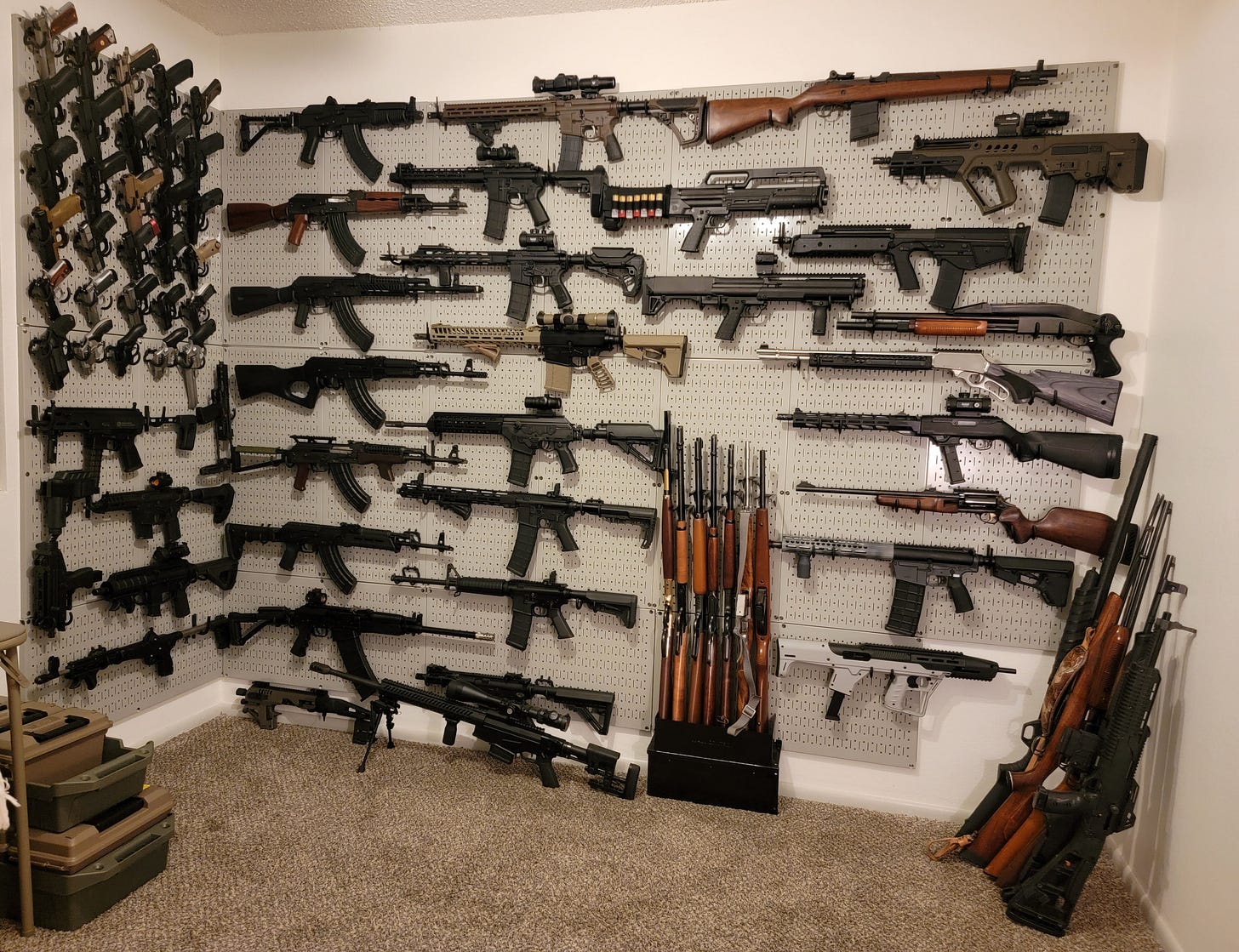The Rules are Myths (2): Undoing Chekhov’s Gun
Few things have served to dumb down narrative fiction more than thinking every line has to point to the same place
This is the second of a 6-part series of mini-lectures; the first is here.
Sometime around 1911, Anton Chekhov famously wrote: "If in the first act you have hung a pistol on the wall, then in the following one it should be fired. Otherwise don't put it there." Ever since then, authors and readers have been using this line to essentially curtail the ephemeral, the surreal, essentially insisting that something may only exist in art if it has definitive meaning, as if the only way something can be beautiful if is used to propagate a plot.
But writing doesn’t have to all be bound up in tidy little packages designed for meaningful digestion. Perhaps, like David Lynch, we don’t even know why an image appear, we only know that we feel its power, and may thereby expand the possibilities of meaning in not knowing why. Or perhaps, as in the poetry of Aase Berg, images are fed to the reader continuously, in fragment, amassing a body that knits its form out of chance associations, flashes, waves and stabs. Perhaps instead of the gun on the wall being used to kill someone, the gun disappears, never to be seen again, its absence looming even more greatly than in mere drama.
Great writing isn’t only meant to be designed around purpose, utility, and arc; instead we might think of language in a more sound-driven manner, wherein its power is derived from a more fragmentary, sound or idea-driven creations not designed to someday appear onscreen. Surprise your reader (and yourself). Shake up expectations. As soon as you already know where you are going, the writing is as much as dead. We should hope to write sentences that shine in and of themselves, that surprise and cajole in the manner of their combination, in the wake of which from paragraph to paragraph anything at all might happen.
READINGS
Steven Dunn, Stories from Potted Meat
Pierre Guyotat, excerpt from Eden Eden Eden (scroll down to the images near the bottom of the post)
EXERCISE
Write a short piece in a stream-of-consciousness style in which no images repeat, in which no plot is carried on at, but depicts the sprawl of some kind of worldwide trauma (ie: war, though you can take the concept of “war” as literally or metaphorically as you desire; any violence can be on or off the page). First person statements are allowed but the piece in general should have a macro-frame that is allowed to roam amid its parts like a god’s eye. Feel free to use white space, cut up methods, fragments, etc.







The links don't work! But I'm really enjoying this series, and I'm sharing each of them with my writing students; it's just the kind of provocation that they need.
Thank you for this series, the examples and the exercises. The education and reminders I’ve been looking for.